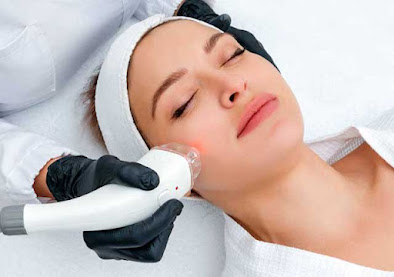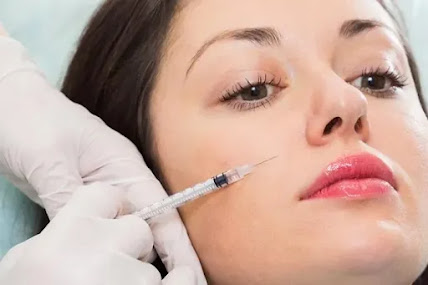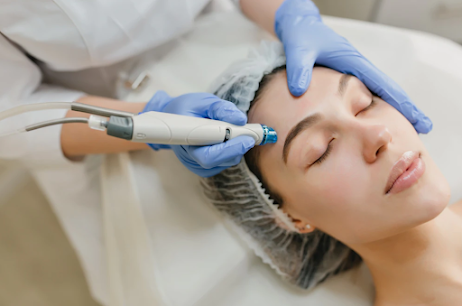Skin Care For a Healthy, Youthful You
Your skin needs to be cared for in order to stay healthy. It is easy to be bombarded daily with information about skin cancer and products that can help you look younger and more wrinkle-free. What do you know about the layers of your skin and how they work together?
Knowing the
structure and nutritional needs of the largest organ in your body will allow
you to look and feel your best while avoiding many skin conditions.
How our Skin
Works
The three layers
of skin are:
Epidermis
This outermost
layer acts as our barrier. Keratinocytes are a group of cells that begin life
in the epidermis' innermost layer and gradually migrate up to the surface. They
produce large quantities of keratin, which protects us from the outside
environment. They die once they reach the surface and then flake off as usual.
Dermis
The dermis, the
next layer below, contains three types of connective tissues. Collagen gives
skin strength, proteins give it its typical structure and firmness, and elastin
gives it elasticity.
Subcutaneous
Tissue
This region below
the dermis is made up of fat cells. These fat cells provide insulation from the
elements and make our skin appear plump and full.
Why skin wrinkles
Epidermal changes
In each decade,
there is 10% fewer epidermal cell, and they reproduce more slowly. These cells
lose their ability to connect over time. These effects have three consequences.
A thinner
epidermis can give skin the fragile appearance one sees in an older person. The
skin's ability for repair decreases with fewer cells. Also, the skin's ability
to retain moisture and protect itself from the elements is less cohesive.
Dermal Changes
The dermis is
thinner, just like the epidermis. A lower skin strength is caused by decreased
collagen production. The elasticity of the skin will decrease as the elastin
fibers wear down. This results in wrinkles and eventually sagging skin.
Additionally, our
sweat glands and our oil-producing glands produce less, which contributes to
dry skin.
Subcutaneous
Changes
This layer's fat
cells also shrink with age. As this layer loses its plumpness, it can lead to
wrinkles and sagging.
Gaining weight is
not a good strategy for skin care. The thin subcutaneous fat layer is not the
place where we add fat.
The Sun
Premature skin
aging is most likely to be caused by the sun's UVA and UVB UV radiations. How
much damage is done will depend on how much exposure you have had and what
natural pigment protection you have.
What You Can Do
Don't Smoke
Experts at
the Skin care clinic in Kingston Vale have found that smoking
accelerates aging and can increase wrinkles. These changes don't have to happen
when you are old. They can even be seen in young adults who have smoked for
less than ten years.
The first is that
smoking reduces the size of the capillary vessels on your outer skin. This
decreases oxygen supply and essential nutrients like vitamin A. This damages
collagen and elastin, essential for skin strength and elasticity. The
repetitive facial expressions of smokers, such as lip-smacking while inhaling,
can increase wrinkles over time.
Practice Sun Skin
Care
Skincare
specialist, says that using high-sun sunscreens is the best thing you can do
for your skin to prevent premature skin aging. When you are exposed to direct
sunlight between 10 a.m. and 2 p.m., clothing and sunscreen protection should
be worn.
Sun exposure is
essential for vitamin D production, bone health, immunity, and cancer
prevention. It is sufficient to get 15 minutes of sun exposure each day in warm
weather, even on smaller areas than your face.
Nighttime Face
Wash
Make sure to wash
your face gently with soap and water. Your skin will feel tight for about 10-15
minutes. Washing twice daily, especially after 40, can make skin less oily and
prone to wrinkles. Modify your routine if you have naturally oily skin.
Manage Stress
Skin Care Clinic Kingston dermatologist, and psychiatrist, say emotional problems
can make you look five years older. Anxiety can increase cortisol levels, which
causes inflammation and breaks down collagen. This can lead to acne and facial
reddening. Regular exercise, deep breathing under stress (nose inhale for 3
seconds, mouth exhale), and a healthy diet rich in antioxidants will all help.
Visit for more related blog: https://drinjyghanem.blogspot.com/2022/12/choosing-right-skin-care.html





Comments
Post a Comment